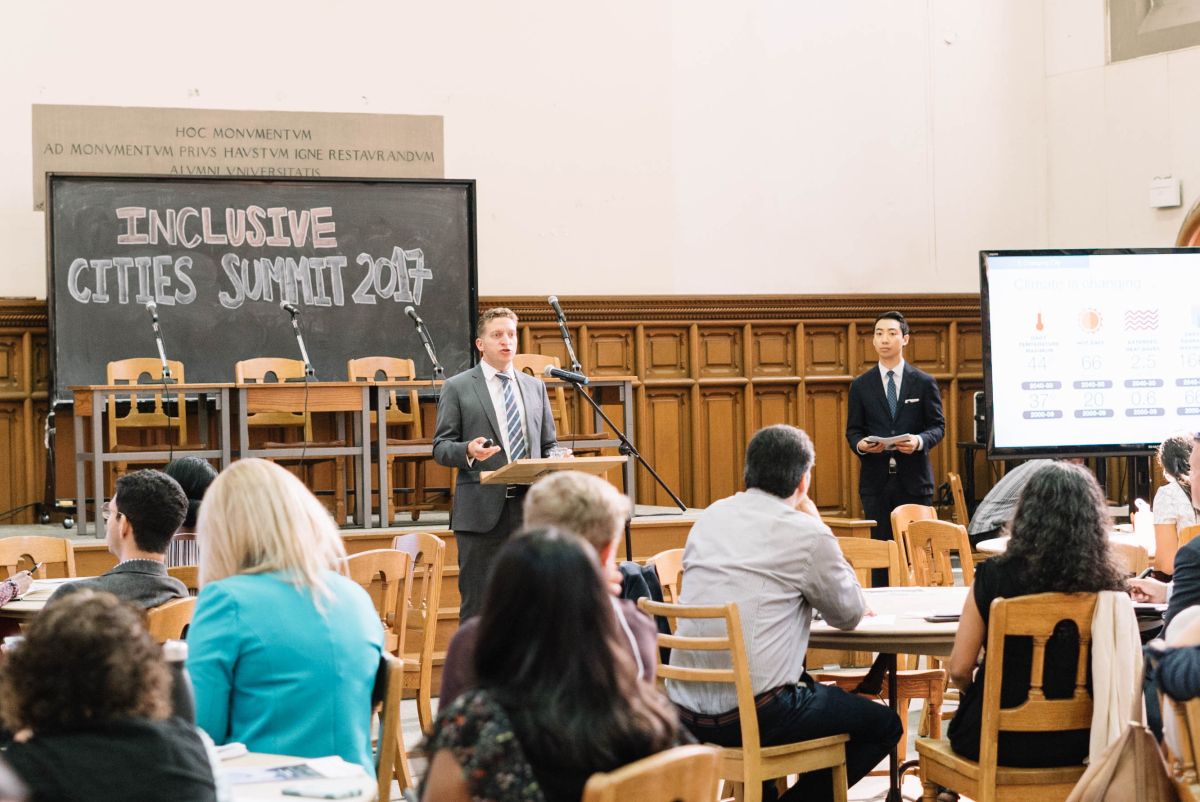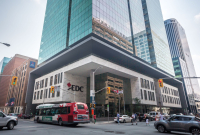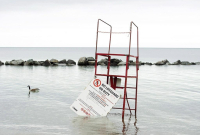Support strong Canadian climate journalism for 2025
Toronto's “chief resilience officer” is mapping out how Canada’s biggest city should brace for potential shocks and long-term stresses from climate change and other 21st century challenges.
“Climate change adaptation is really at the heart of our work,” Elliott Cappell told National Observer in a recent interview about his mandate to develop a resilience strategy for the sprawling, rapidly-growing city.
Originally from Toronto, where 570 high-rise towers are currently at the proposal stage or under construction, Cappell has worked for the Ontario and federal governments, consulted for the World Bank and United Nations and worked with more than 25 Ontario municipalities on urban development action plans. He was appointed to his new position in June.
He said Toronto is expected to experience more intense and more frequent weather events and to become hotter and wetter.
Building codes, mainly overseen by the provincial government, adhere to a climate that may no longer exist in the city, he said. Now, he said his aim is to set the wheels in motion to build climate adaptation into high-rise towers.
“My point isn’t that we’re all under extreme danger,” he said. “My point is that we need to check and make sure that not just our building codes, but our zoning, licensing, service delivery, infrastructure development — that everything is up to a 21st century standard.”
Cappell’s position is financed via a grant from 100 Resilient Cities, a global program initiated by the Rockefeller Foundation. The Foundation’s purpose: “By understanding how existing challenges are connected, and by planning not just for potential shocks—like fires, floods, and earthquakes—but also for everyday stresses—such as chronic water shortages, crime, violence, economic inequality, and inefficient public transportation—cities can make themselves better in both good times and bad, for all their citizens.”
Across Canada, Montreal, Calgary and Vancouver have also appointed chief resilience officers through the same program. 100 Resilient Cities describes the job as "a top-level advisor" to the mayor who works "across departments and with the local community" to come up with plans that are innovative and will safeguard the city.
He recently spoke to National Observer. Following is an edited Q and A.

What would a resilient TO look like to you?
There are two sides to the equation: the acute shocks and the stresses. On the shock side, climate change adaptation is at the core. We want to be ready for climate change. There are other 21st century risks we face as part of a globalized economy: migration; cyber threats, etc. On the stresses side, climate change adaptation is there again. It’s slowly changing the nature of the city, but then there are a number of other social factors. People often highlight congestion and housing as issues, but really the main focus we’re hearing from people — survey respondents — is equity. That’s what people are concerned about — growing inequity is weakening the city every day, which is also relevant for the shock side as well because we know that poor neighbourhoods deal worse with shocks and recover from them more slowly. What we’re seeing is a constellation — where climate change adaptation is really at the heart of our work.
There are a lot of variables, some predictable, but how do you formulate a plan given all the moving parts?
With any city system preparing for X or for Y — its’ a complex system in a changing world. I take your point that we can’t just prepare for event X at site Y, but what we can do — by integrating resilience thinking into the way the city budgets, plans, delivers services and projects — we can make the city more resilient. Approaching through a resilience lens, we can make the city better every day and we can make it ready for whatever shocks or stresses we may encounter.
Are there projections of what Toronto is going to confront in terms of weather?
We know there will be a greater intensity and frequency of extreme events. Generally speaking for Toronto, projections are that it will get hotter and wetter. That doesn’t mean we won’t have extreme cold, we may even have more cold. The point is that those are general trends. We can project, but not predict, what’s going to happen. One area where we can get better is we can get downscale climate data for Toronto. I don't think I’m letting the cat out of the bag by saying that this is something that the Province of Ontario is thinking about a lot and we’re hoping to partner with the province.

In your talk (at the United Nations Habitat Inclusive Cities conference) you said that Toronto is growing very quickly and building codes adhere to a climate that no longer exists in the city.
The key point I was trying to make … is not that the design standard is somehow going to sink us all into the sea — we have a lot of confidence in our engineers and construction services in Toronto. Rather, it’s that we should check. It may be less expensive to have everything built to a certain code sometimes and it may not be — the extreme example is Houston. Because they didn’t check, they don’t have climate adaptation, they were building to once-in-100-years standards but they had three once in 500 year storms in the last 20 years. My point isn’t that we’re all under extreme danger. My point is that we need to check and make sure that not just our building codes, but our zoning, licensing, service delivery, infrastructure development — that everything is up to a 21st century standard.
What is the time frame for putting this resilience plan into place?
We’re working on a two-year mandate and quickly developing our resilience strategy, in the first year we’re doing a preliminary assessment — it’s a big hump to get over. Then we do a deep dive into a few different questions. One of them will be what are the opportunities for building codes, infrastructure developments, zoning, etc. to be improved using resilience strategies. That we’ll complete within the two years.
What would hold back a resilience plan? What’s the cost and where does your budget come from specifically?
We’re absorbing some budget from 100 Resilient Cities. It’s a grant — the city applied competitively and won. We also get some in-kind funding, support and funding from various agencies in Toronto. We’ve made applications and requests for funding elsewhere. The question of what will happen long term, who will fund it long term — that’s what we are trying to ascertain at the moment, there will be a recommendation in our strategy.
Does Resilient TO or 100 Resilient Cities operate in a vacuum or is it connected to other framework concepts regarding climate change, like provincial and federal climate plans, the Paris Agreement and the U.N. Sustainable Development Goals?
Resilience is not just about climate change, so it wouldn’t fit neatly within that governance structure. Resilience is a wider concept than just climate change. That said, climate change is a big factor — one of the three major trends: climate change; globalization; urbanization and the impact on cities. In terms of the Rockefeller Foundation’s framework, the city resilience framework is very much consistent with all of the frameworks that you just laid out.







Comments